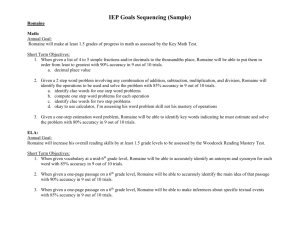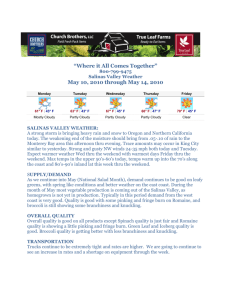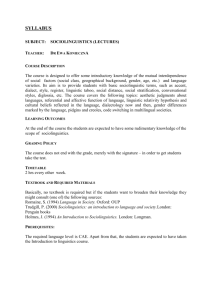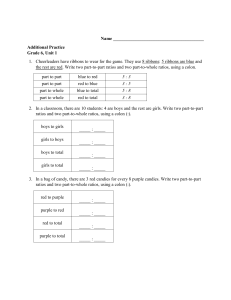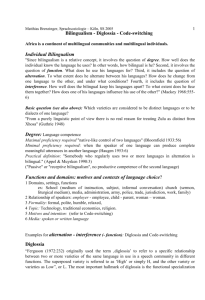PLANNING FOR LINGUISTIC DIVERSITY
advertisement
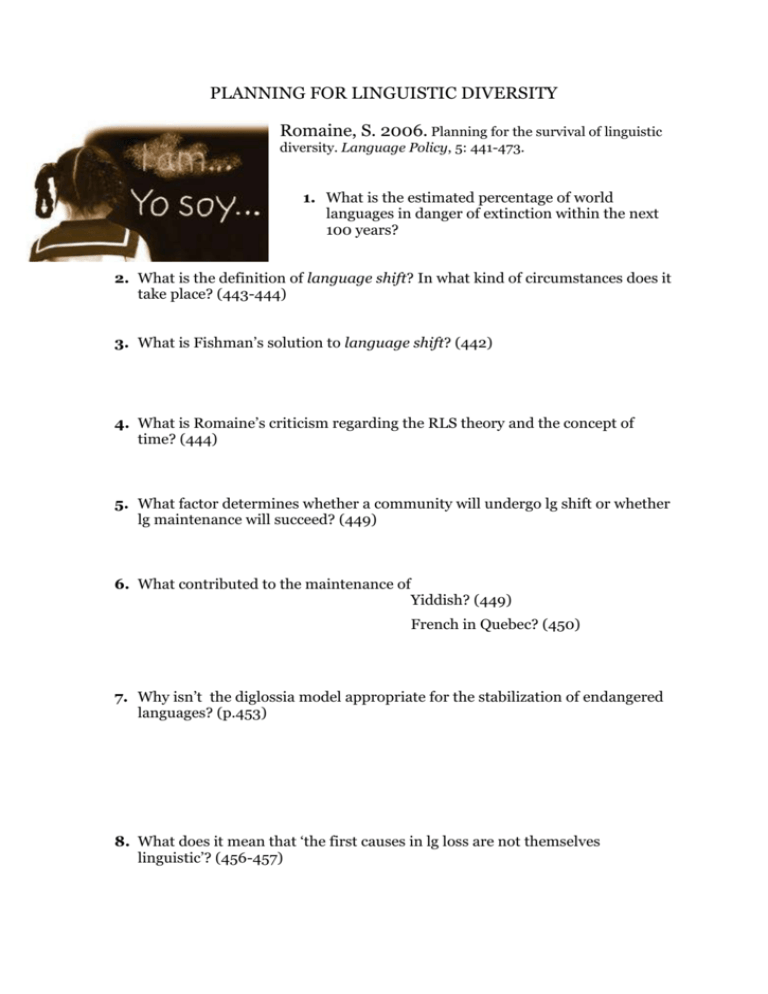
PLANNING FOR LINGUISTIC DIVERSITY Romaine, S. 2006. Planning for the survival of linguistic diversity. Language Policy, 5: 441-473. 1. What is the estimated percentage of world languages in danger of extinction within the next 100 years? 2. What is the definition of language shift? In what kind of circumstances does it take place? (443-444) 3. What is Fishman’s solution to language shift? (442) 4. What is Romaine’s criticism regarding the RLS theory and the concept of time? (444) 5. What factor determines whether a community will undergo lg shift or whether lg maintenance will succeed? (449) 6. What contributed to the maintenance of Yiddish? (449) French in Quebec? (450) 7. Why isn’t the diglossia model appropriate for the stabilization of endangered languages? (p.453) 8. What does it mean that ‘the first causes in lg loss are not themselves linguistic’? (456-457) 9. Why is it difficult for post-colonial countries to get rid of the dominating colonial language (in the majority of cases English)? (460) 10. According to Romaine, is intergenerational transmission the only way to preserve endangered lgs ? (464465) Discuss: ‘...[T]he main value for many small lgs in the future may well be symbolic and cultural rather than practical .... [they will] become primary vehicles for the articulation of identity’ (465) What does it mean? Do you agree with Romaine?
